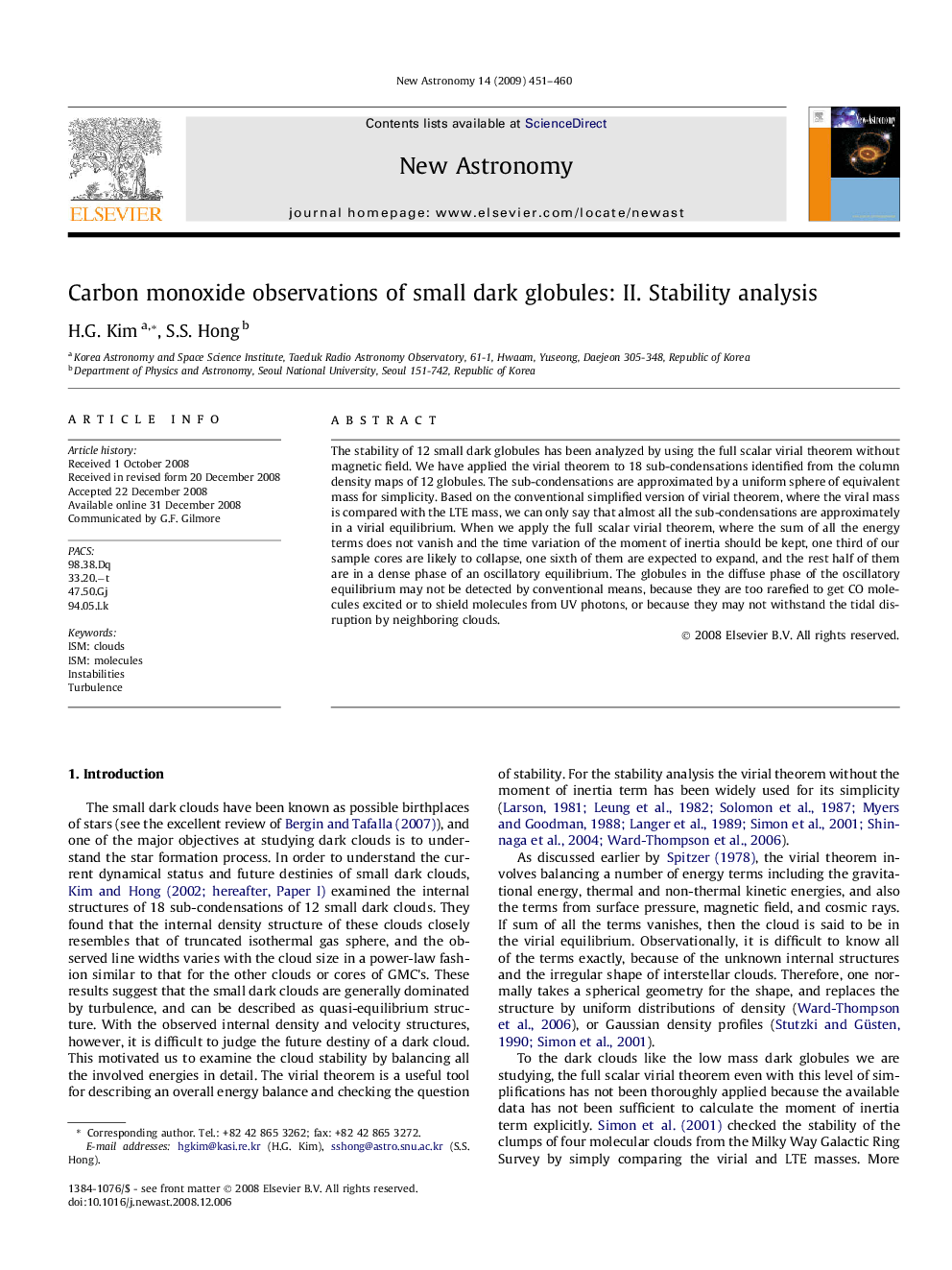| Article ID | Journal | Published Year | Pages | File Type |
|---|---|---|---|---|
| 1779590 | New Astronomy | 2009 | 10 Pages |
Abstract
The stability of 12 small dark globules has been analyzed by using the full scalar virial theorem without magnetic field. We have applied the virial theorem to 18 sub-condensations identified from the column density maps of 12 globules. The sub-condensations are approximated by a uniform sphere of equivalent mass for simplicity. Based on the conventional simplified version of virial theorem, where the viral mass is compared with the LTE mass, we can only say that almost all the sub-condensations are approximately in a virial equilibrium. When we apply the full scalar virial theorem, where the sum of all the energy terms does not vanish and the time variation of the moment of inertia should be kept, one third of our sample cores are likely to collapse, one sixth of them are expected to expand, and the rest half of them are in a dense phase of an oscillatory equilibrium. The globules in the diffuse phase of the oscillatory equilibrium may not be detected by conventional means, because they are too rarefied to get CO molecules excited or to shield molecules from UV photons, or because they may not withstand the tidal disruption by neighboring clouds.
Related Topics
Physical Sciences and Engineering
Physics and Astronomy
Astronomy and Astrophysics
Authors
H.G. Kim, S.S. Hong,
